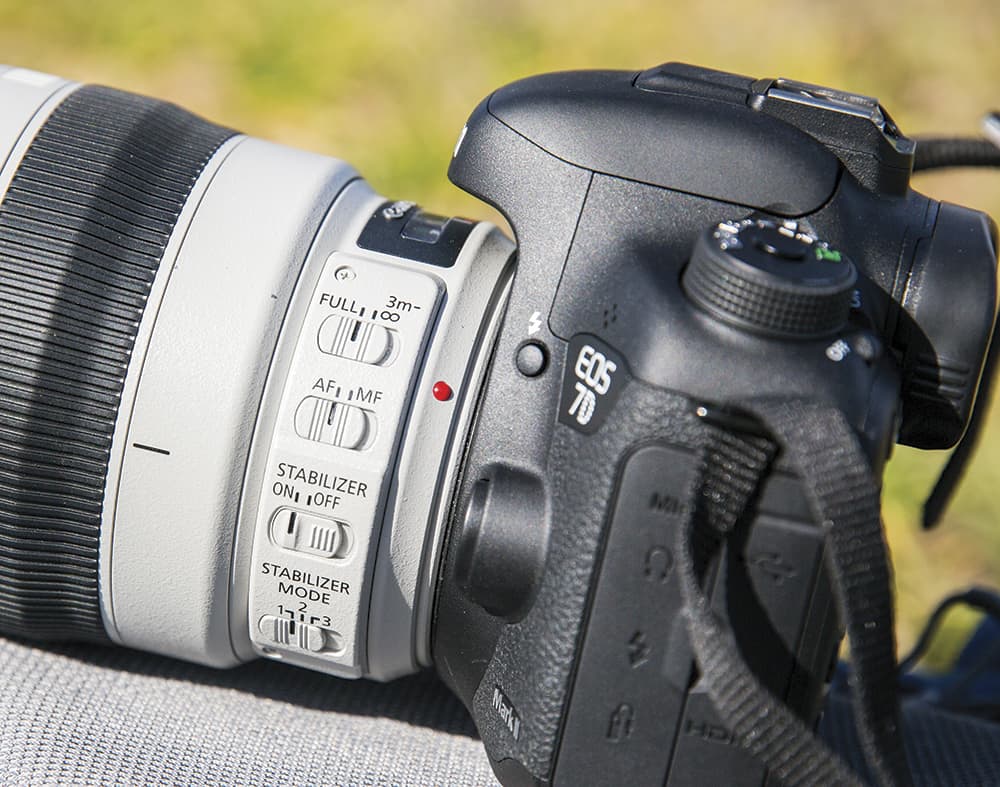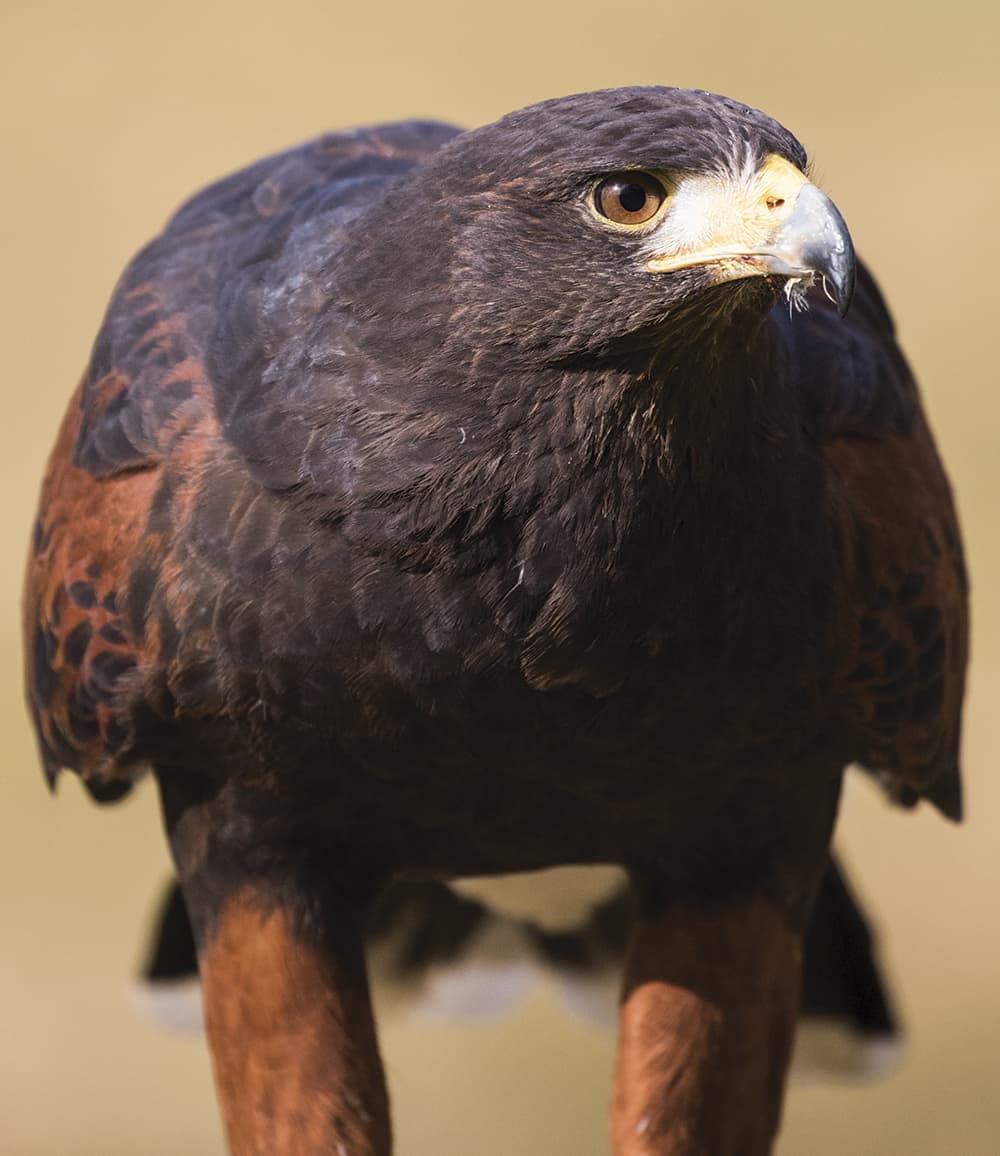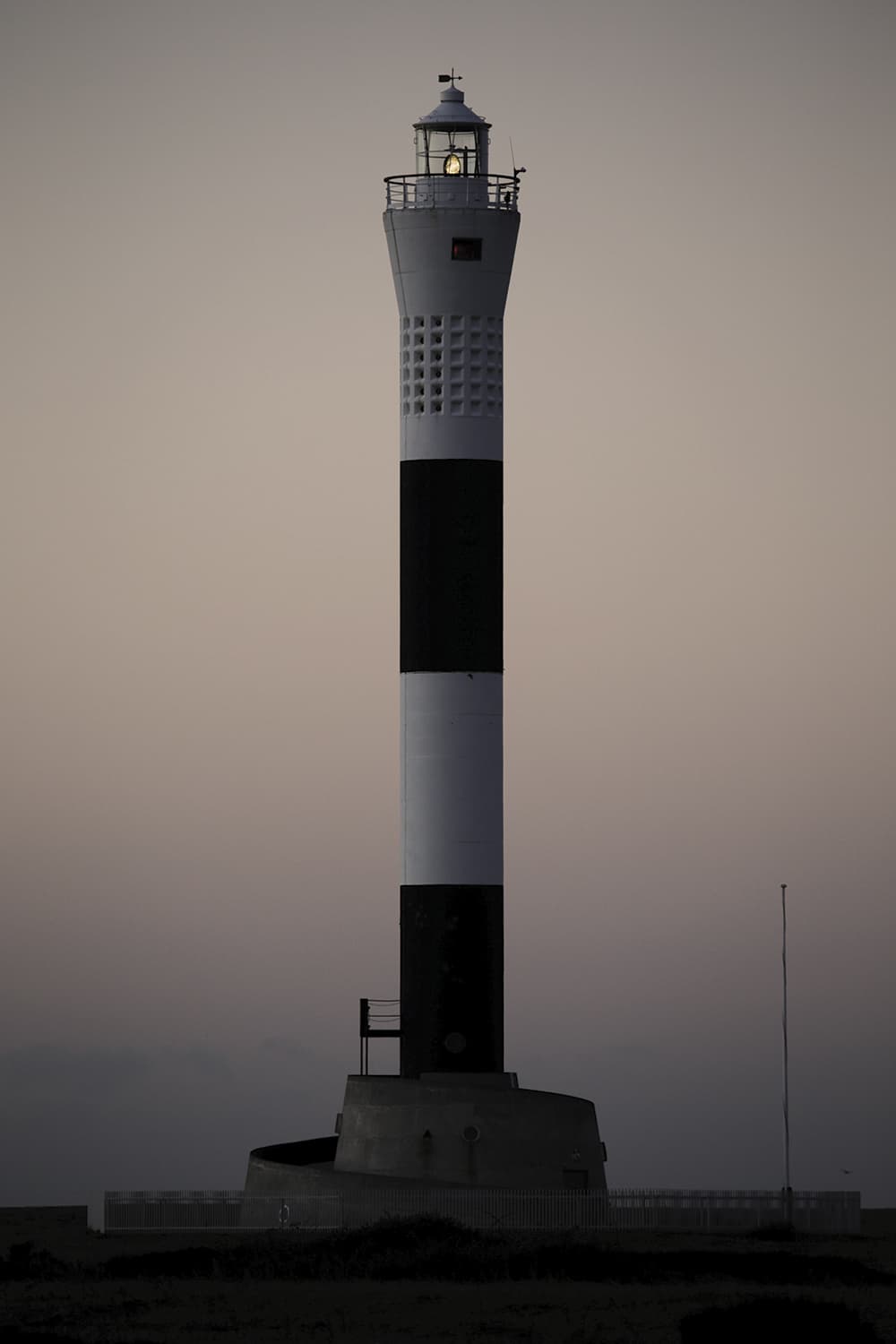
By enabling image stabilisation, it’s possible to obtain sharp images of moving subjects at lower shutter speeds than normal. Photo by Tom Calton
Have you ever tried taking a photo with a telephoto lens, only to find it difficult to achieve a pin-sharp shot? Well, often this is caused by small movements of the camera being transferred down through the lens, which in turn generates a blur or softness to your images. This is particularly common when shooting with a longer focal length, such as 200mm, at a slower shutter speed. The magnification of the lens exaggerates even the smallest vibrations of the camera, generating a greater amount of blur than with a shorter lens.
There are a handful of ways to fix this problem. The first would be to try using a faster shutter speed, but this isn’t always possible – especially if you’re shooting in low-light situations and want to avoid an increase in digital noise created by using higher ISO speeds. Another solution would be to simply mount the camera to a sturdy tripod, which will practically eliminate any movements being transferred to the camera during the exposure. The downside to this approach is that it requires you to carry an additional piece of bulky equipment with you at all times – not to mention that using a tripod is ultimately going to slow you down somewhat, which can often result in you missing the shot altogether as you spend time setting it up.

IS is easily activated with a flick of a switch. Mode 1 is for standard shooting, while Mode 2 is useful for panning shots
The final solution, and the one that we’ll be focusing on, would be to invest in a new lens that includes image stabilisation technology – commonly abbreviated to IS. As the name implies, image stabilisation is designed to counteract the vibrations created when shooting handheld and in turn reduces the chances of image blur ruining your shots. IS can be quickly activated and deactivated at any time by simply using the dedicated IS switch located on the lens barrel itself. Purchasing a lens with IS will often come at a price, though, as these lenses are generally more expensive than their non-IS counterparts. However, having the advantage of dramatically increasing your chances of bagging pin-sharp shots is usually enough to persuade photographers to delve into their wallets and make the investment.
The first Canon EF lens to feature IS was initially seen on the Canon 75-300mm, which debuted in 1995. Before this, Canon’s image stabilisation technology was only available in its range of camcorders. This pioneering IS lens took approximately one second to activate and provided up to two stops of stability when in action. At the time, this provided a major advantage to photographers, particularly sports and wildlife photographers, who tend to shoot at the longer focal lengths at which camera shake becomes more pronounced. By today’s standards, however, these specs are fairly primitive, as modern versions of IS are now able to provide stabilisation with shutter speeds of up to four stops slower than normal (more on this later). That said, credit has to be given to this pioneering model, as it helped to pave the way for the impressive technology that is commonly found on a range of Canon lenses today, including the Canon EF 24-70mm f/4L IS USM and EF 70-200mm f/2.8L IS II USM lenses.

Optical stabilisation is also found on third-party lenses. For this shot IS (Mode 2) was deployed on the Sigma 150-600mm f/5-6.3 C DG OS HSM lens that was attached to a Canon EOS 5D Mark III. Photo by Michael Topham
How it works
In layman’s terms, Canon’s IS system works by firstly using a set of internal gyro sensors that detect the speed and angle of any camera movements. This sensor data is then passed on to a microcomputer within the lens. The microcomputer analyses the data then transfers a set of orders over to a special stabilisation lens group, which will move independently at the necessary speed and direction that will successfully counteract the camera movements. As a result of this process, the image appears almost completely static to the image sensor, despite the fact that the camera and lens are still moving.
On the latest versions of Canon’s image-stabilisation system, this series of actions is started within 0.002 of a second, meaning that it gets to work almost at the instant that the camera starts to move. What’s more, this process is repeated continuously so that the lens can provide constant reactions to even the smallest of changes in the camera’s movement speed and direction during shooting.
Although image stabilisation is undeniably a fantastic photographic tool, unsurprisingly it isn’t without its limitations. The effectiveness of the IS is measured in stops; for example, as we’ve already briefly touched upon, the latest Canon lenses are kitted with the most up-to-date IS, which is able to reduce shake by up to four stops. This effectively means that you can shoot using a shutter speed that is up to four stops slower and still have the potential to capture sharp shots.

A solid focusing technique combined with an image stabilised lens can produce incredibly sharp results. Photo by Michael Topham
Shutter speeds
When using a standard lens, in an attempt to avoid camera shake, most photographers aim to shoot with a shutter speed of no less than double the focal length of their lens. For example, if you are shooting with a 200mm lens, you’d aim for a shutter speed of 1/400sec or faster in order to give yourself the best chance of obtaining a pin-sharp shot. When we take into consideration that modern versions of IS can allow you to shoot up to four stops slower and still obtain sharp shots, using the same numbers as above, we can now go as low as 1/25sec and still have the potential to obtain sharp shots with a 200mm focal length. I say ‘potential’, because this is not always guaranteed as it will all depend on the ferocity of the camera shake the IS has to contend with, as well as its ability to successfully counteract it.
It’s also important to remember that image stabilisation only applies to movement created by the camera, not movement within the frame. For example, if you were taking a photo of a fast-moving object, such as a racing car, the car itself will still appear blurred when shooting with IS activated and using a slower shutter speed, as the car is moving across the frame. In this instance, you would be forced to use a faster shutter speed if you wanted to freeze its motion.
As we’ve already touched upon, once the IS system is activated, it will continuously aim to counter lens movements in all directions, but what happens if you want to capture panning shots? Well, on some more recent Canon lenses, next to the IS switch on the lens barrel itself is a secondary switch that offers a different mode. With the switch set to Mode 1 the IS will operate in the standard manner to counteract movements in all directions. However, flicking the switch over to Mode 2 will cause the IS to only counter vertical motions and not horizontal ones. This is particularly useful for panning shots, where you want to track a moving subject while keeping the background nice and blurred to give the image a sense of motion. Taking advantage of these different modes is the best way to get the most out of the lens and what it has to offer.

When you’re setting up a shot on a tripod you will want to get into the habit of deactivating the IS. Photo by Michael Topham
Why not to use IS on a tripod
A common mistake made by amateur photographers when they first purchase a lens with image stabilisation is to keep it on at all times. As a general rule of thumb, it’s always best to only use IS when you actually need to use it – i.e. when you’re shooting handheld in low light. The reason for this is that there are some situations where having the IS activated can actually be detrimental to image quality. A prime example of this is when shooting on a tripod and using a slow shutter speed. The misconception here is that by having IS activated, you will have an additional layer of stabilisation, whereas in reality the IS itself can do the exact opposite and actually generate blurred images. This is down to how the IS system operates, as it will try to compensate for movements that aren’t there, resulting in softened or shaky images.
There is a slight exception to this rule, however, as some more modern Canon lenses now feature Tripod Detection, which causes the IS system to deactivate once it senses that the camera has been locked off on a tripod, allowing you to keep the IS activated continuously.
Using IS for video
If you’ve ever tried to use your DSLR to capture video footage handheld, you’ll know that this can often result in shaky, amateurish-looking video. A great way to fix this problem is by using a lens with image stabilisation and making sure it is activated during recording. Just like when taking stills, the IS will continuously work to counteract any jarring movements while you’re recording, giving smoother and more pleasing results. Obviously the IS will have its limitations and it most likely won’t be able to fully counter big jolts of the camera, but providing you shoot with a steady hand, you should notice a vast improvement in quality with just the flick of a switch.
There is a slight downside, though, and that’s with the audio. If you’re using your camera’s built-in mic to simultaneously record audio with your video, then you may find that the slight chirping created by subtle movements of the IS will be picked up, spoiling your audio quality. A simple workaround would be to invest in an external hotshoe-mounted microphone, which should be far enough away from the source of the noise as to not be picked up.







